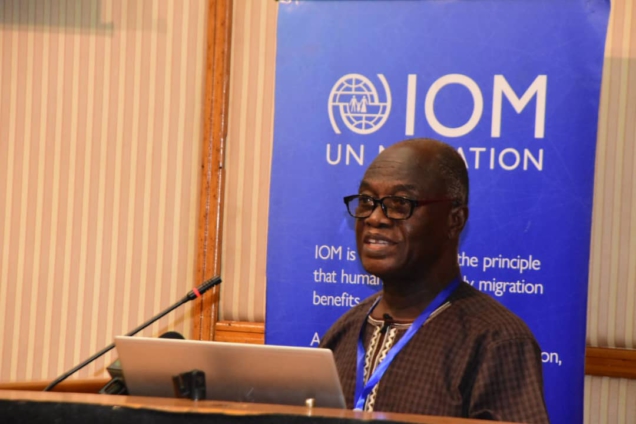About three in every four (76.2%) non-Ghanaians are working in three occupations only; namely, services and sales (34.0%), skilled agricultural, forestry and fishery (25.0%) and craft and related trades (17.2%).
According to the latest thematic report on Migration by the Ghana Statistical Service has revealed, these are easy-entry jobs which call for no skills or basic skills in order for one to go into them.
The majority of the working immigrants are self-employed without employees.
The highest proportion of non-Ghanaian population are from Nigeria, Togo, Niger and Burkina Faso
The migrants constituted 28.9% of the total population of 30,832,019 enumerated in the 2021 Population and Housing Census.
Majority (52.5%) of the migrants were females.
Speaking to Joy Business, Associate Professor of Population Studies at the Regional Institute for Population Studies at the University of Ghana, Professor John Anarfi said this is largely attributed to Ghanaians moving out of the country without skills in certain sectors.
He therefore entreated government to diversify the economy to have more Ghanaians acquire additional skills to accelerate the country’s economic growth.
“Ghanaians who are migrating are the main reason and those coming in are going to these areas. So as long as the situation continue, we will get people to occupy jobs which is not too good”, he said
The report further said the proportion of migrants in the population is much higher in rural areas (33.9%) than urban areas (22.2%).
More than a third (35.9%)of the migrants moved to settle permanently while 24.9% also moved due to marriage/family reunification.
Greater Accra received higher number of migrants
The Greater Accra Region received a higher number of migrants than all the other regions.
Six regions received more people than they sent out. All of them are in the south of the country.
The report furthered that there has been a slight decline in migration from 2010 – 2021. This may be as a result of the Covid-19 pandemic because most migrants had gone back to their hometowns and had not returned at the time the census was conducted.
There has been a decline in the non-Ghanaian population in the country between 2010 and 2021.
Latest Stories
-
Paris 2024: Opening ceremony showcases grandiose celebration of French culture and diversity
3 hours -
How decline of Indian vultures led to 500,000 human deaths
4 hours -
Paris 2024: Ghana rocks ‘fabulous fugu’ at olympics opening ceremony
4 hours -
Trust Hospital faces financial strain with rising debt levels – Auditor-General’s report
5 hours -
Electrochem lease: Allocate portions of land to Songor people – Resident demand
5 hours -
82 widows receive financial aid from Chayil Foundation
5 hours -
The silent struggles: Female journalists grapple with Ghana’s high cost of living
5 hours -
BoG yet to make any payment to Service Ghana Auto Group
5 hours -
‘Crushed Young’: The Multimedia Group, JL Properties surprise accident victim’s family with fully-furnished apartment
6 hours -
Asante Kotoko needs structure that would outlive any administration – Opoku Nti
6 hours -
JoyNews exposé on Customs officials demanding bribes airs on July 29
7 hours -
JoyNews Impact Maker Awardee ships first consignment of honey from Kwahu Afram Plains
8 hours -
Joint committee under fire over report on salt mining lease granted Electrochem
8 hours -
Life Lounge with Edem Knight-Tay: Don’t be beaten the third time
8 hours -
Pro-NPP group launched to help ‘Break the 8’
8 hours

